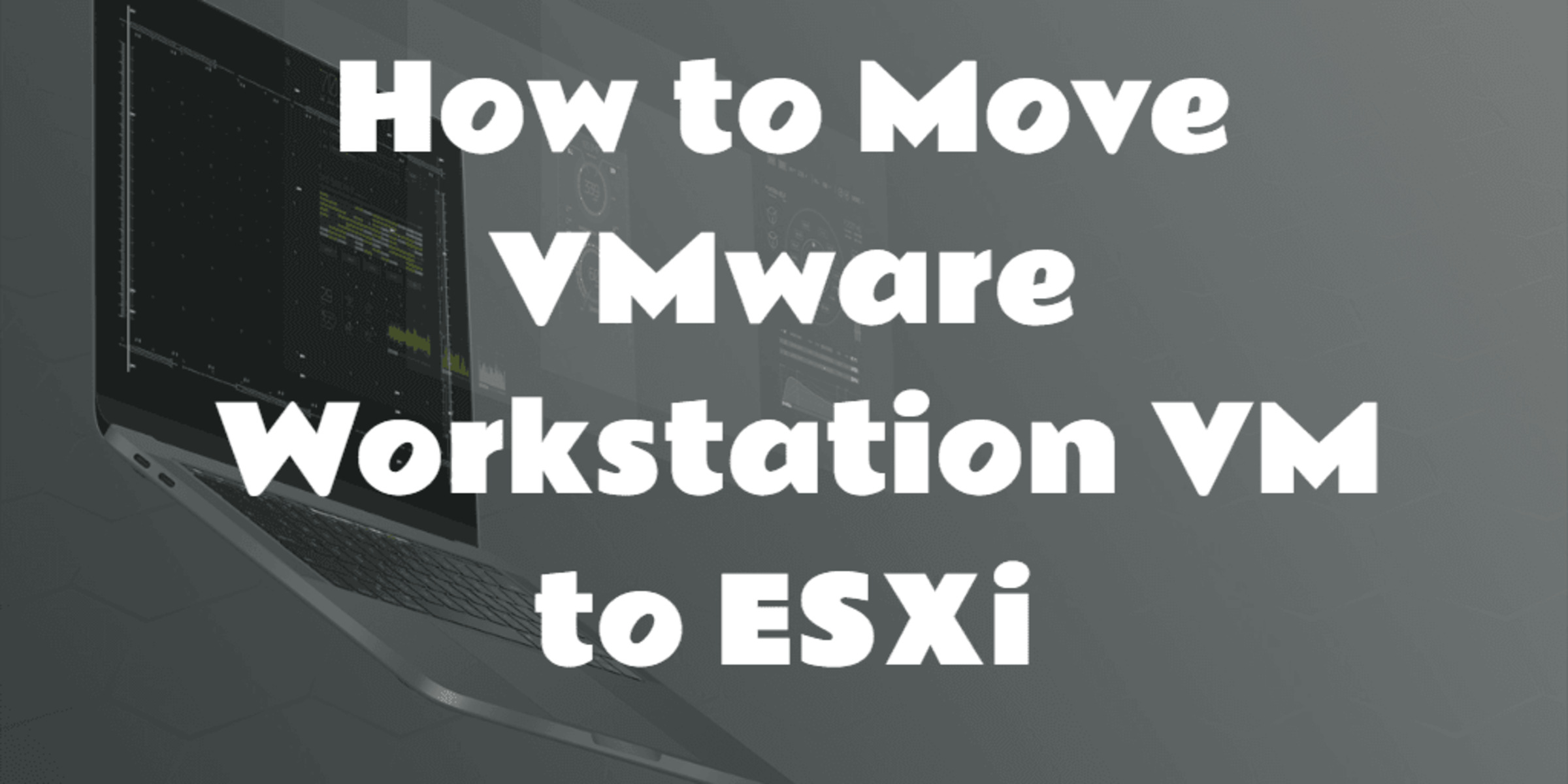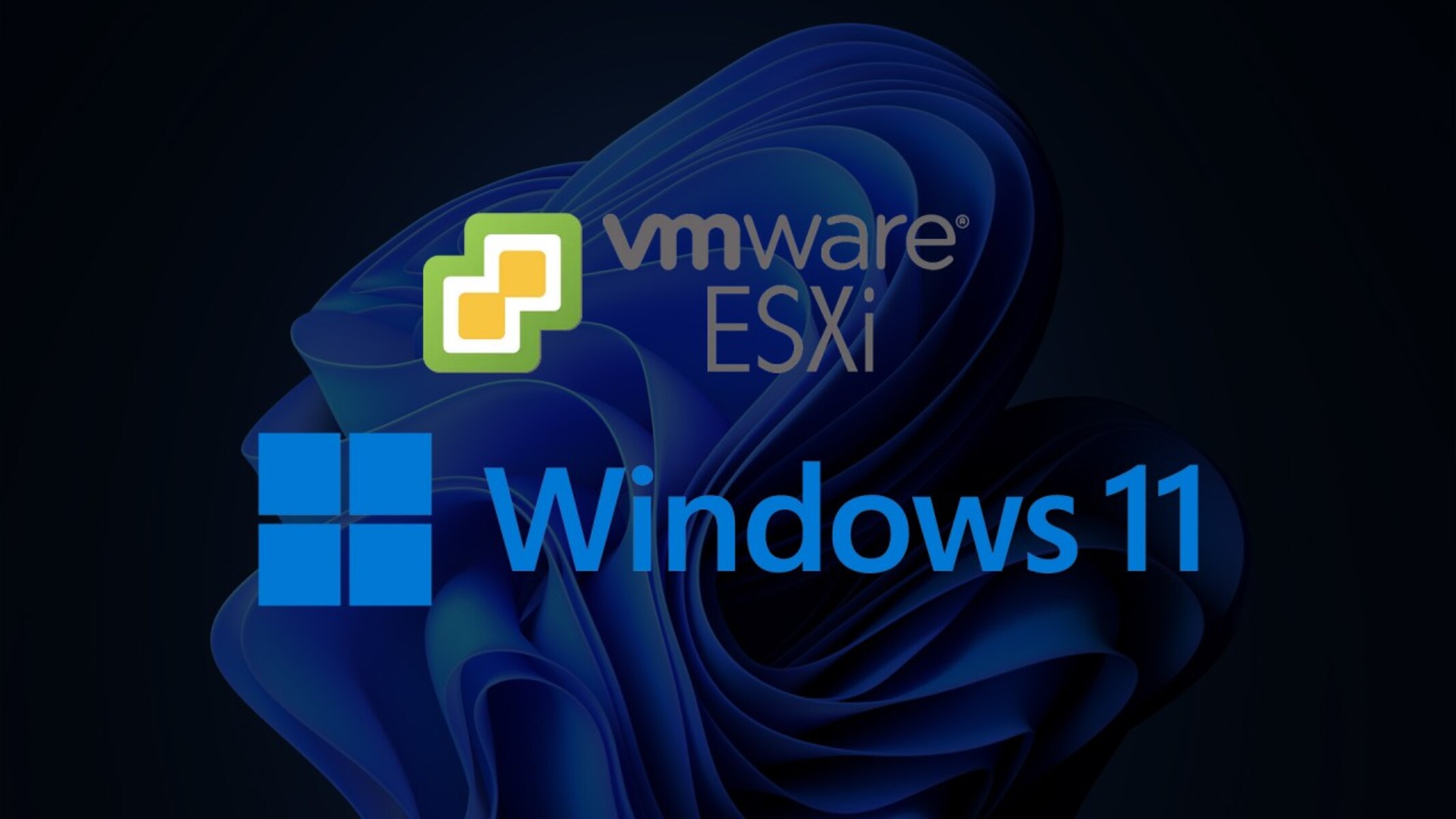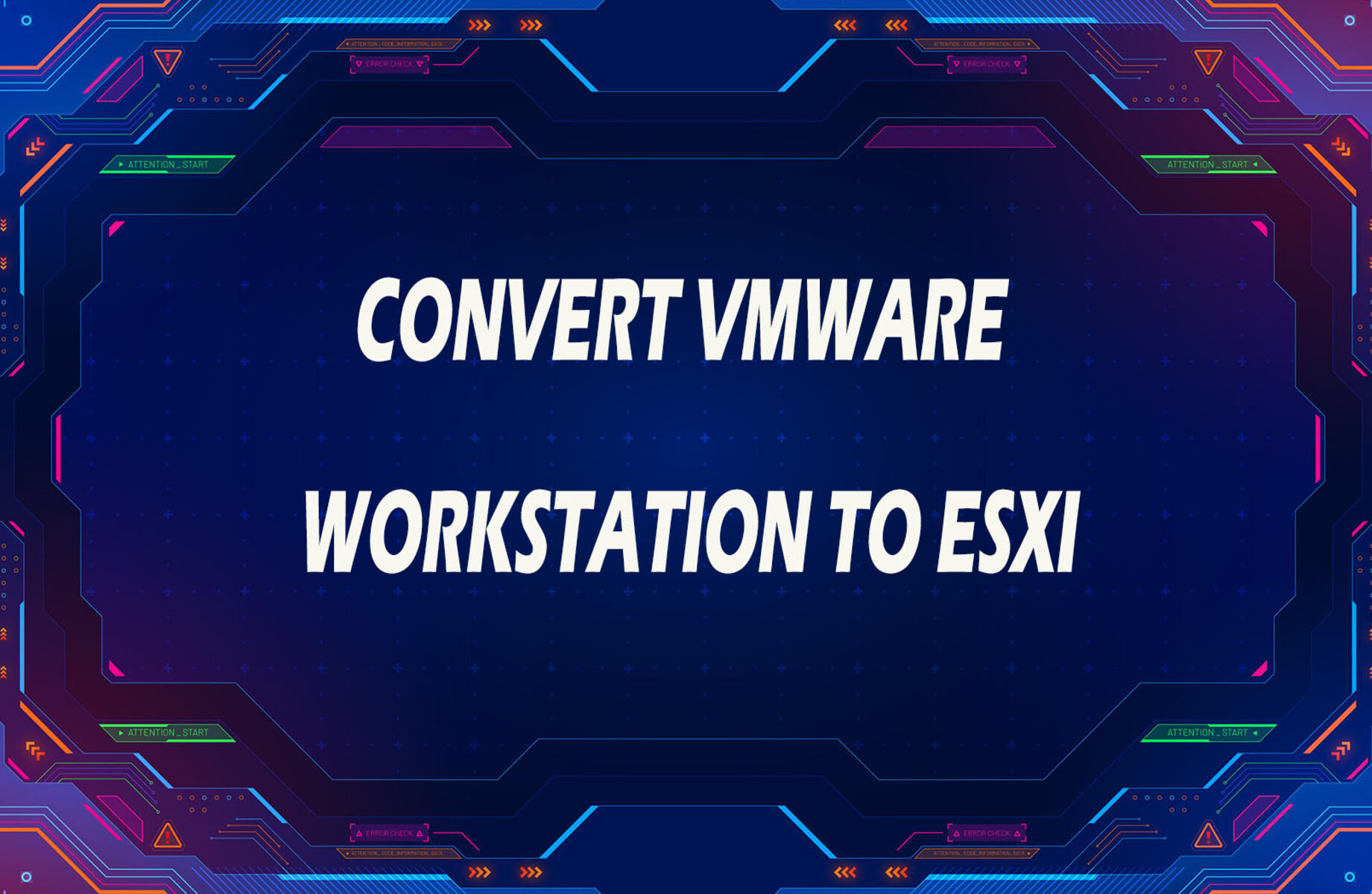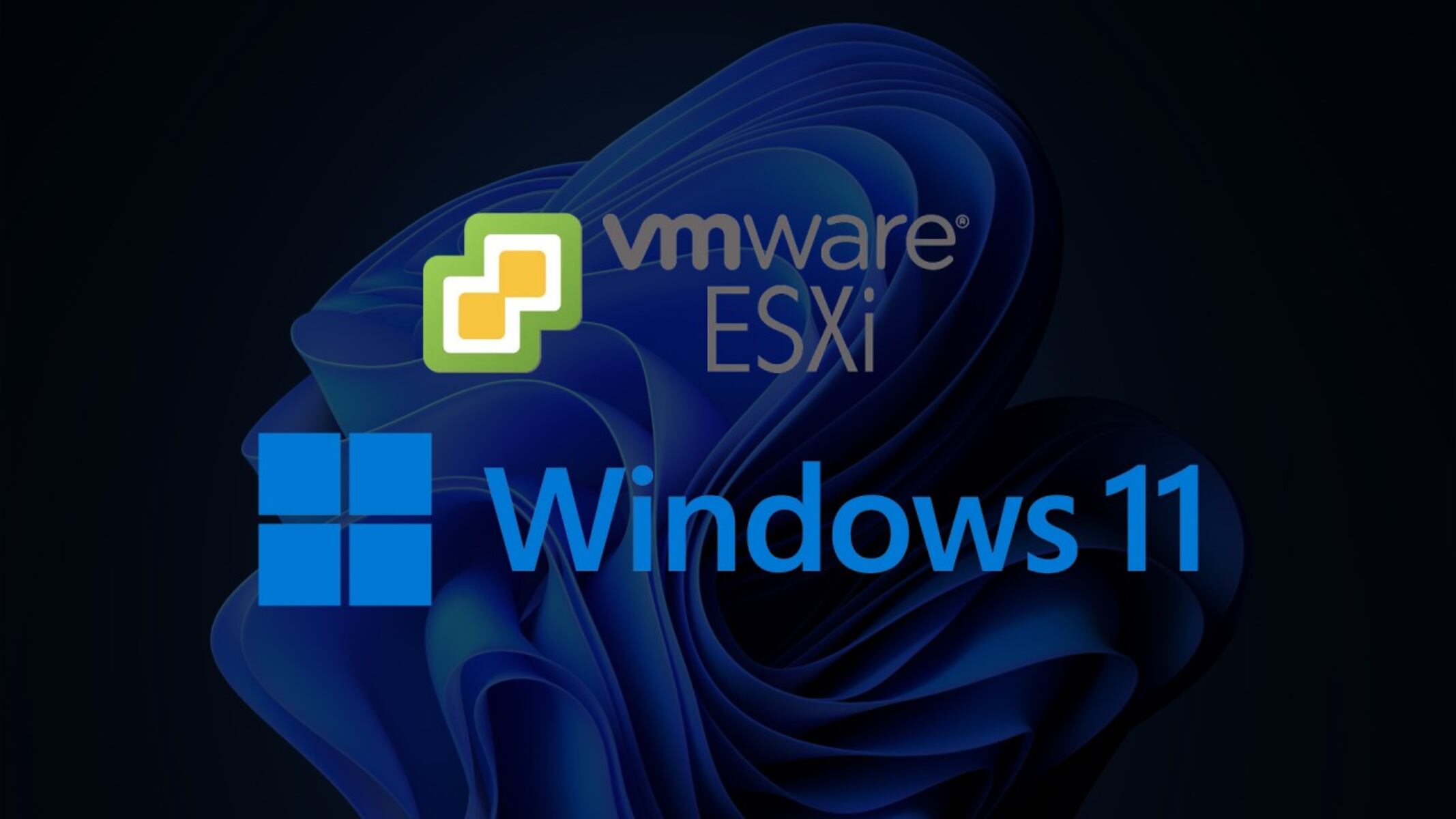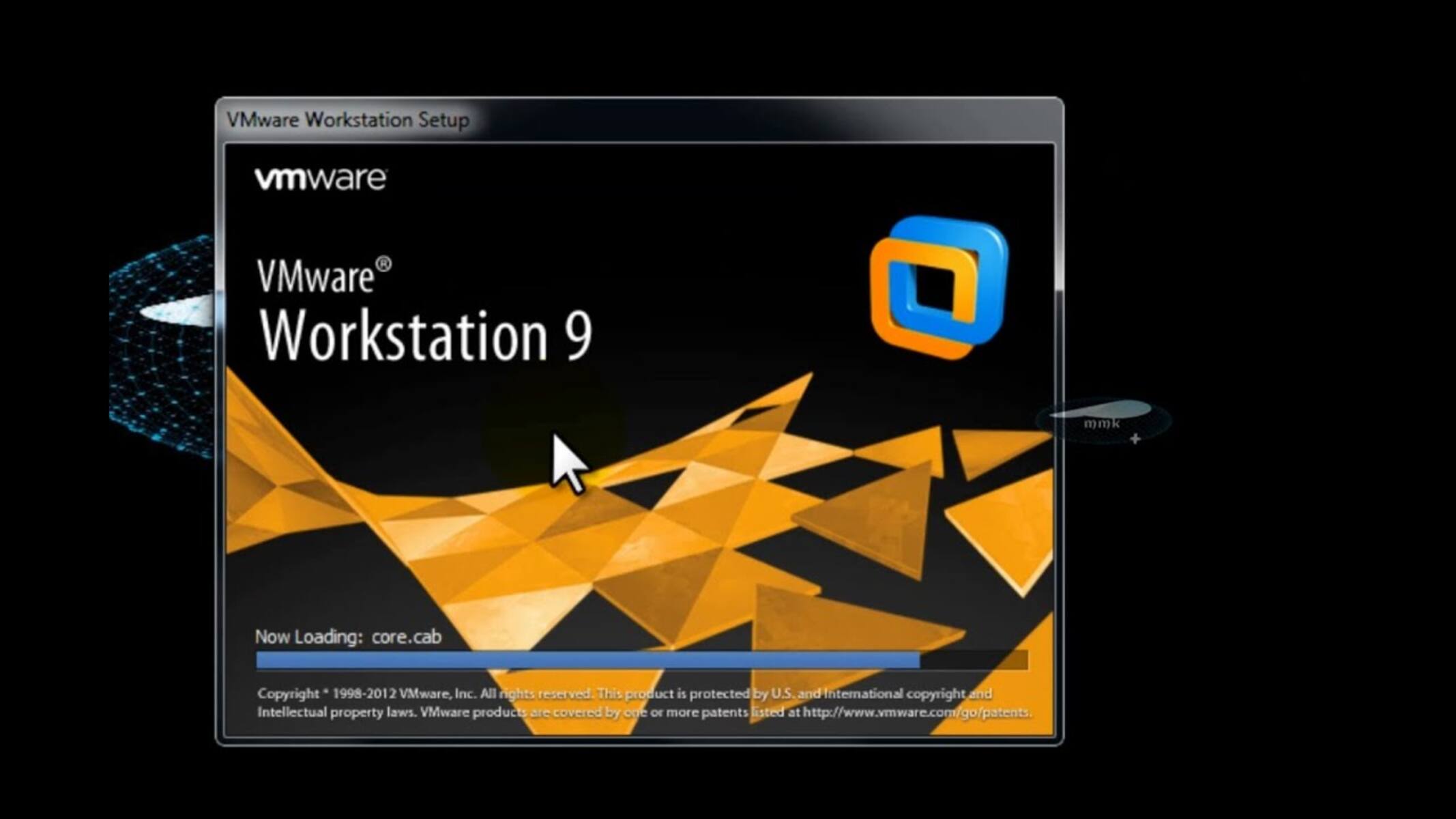Introduction
In today’s digital world, virtualization has become a crucial technology for businesses and individuals alike. Virtual machines enable us to run multiple operating systems on a single physical machine, providing flexibility, efficiency, and cost savings. VMware is a leader in the virtualization industry, offering powerful platforms such as ESXi and Workstation.
If you are looking to migrate a virtual machine from ESXi to Workstation, you’ve come to the right place. This guide will walk you through the step-by-step process of safely moving your virtual machine from ESXi to Workstation, ensuring a seamless transition and minimal disruption to your workflow.
By migrating your virtual machine to Workstation, you can take advantage of its rich feature set, including advanced networking capabilities, snapshot management, and integration with other tools in the VMware ecosystem. Whether you’re a developer, IT professional, or simply someone who wants to explore different operating systems, moving your virtual machine to Workstation opens up a world of possibilities.
Throughout this guide, we will discuss the prerequisites, steps, and considerations involved in the migration process. From shutting down the virtual machine to importing it into Workstation, we’ll cover everything you need to know to successfully complete the migration.
So, whether you’re migrating a small test environment or a complex production setup, let’s dive in and discover how to move a virtual machine from ESXi to Workstation.
Prerequisites
Before you begin the process of moving a virtual machine from ESXi to Workstation, there are a few prerequisites you need to fulfill:
- An active VMware ESXi host: Ensure that you have access to a functioning VMware ESXi host where your virtual machine is currently running. You will need administrative privileges to perform the necessary actions.
- VMware Workstation installed: Make sure you have VMware Workstation installed on the workstation where you want to move the virtual machine. You can download the latest version of Workstation from the VMware website.
- Compatible versions: Verify that the version of VMware Workstation you are using is compatible with the version of ESXi where your virtual machine is running. Check the VMware compatibility matrix for more information on supported versions.
- Sufficient storage space: Ensure that you have enough free storage space on both the ESXi host and the workstation to accommodate the virtual machine files during the migration process.
- Network connectivity: Confirm that there is network connectivity between the ESXi host and the workstation. This can be achieved by checking the network settings and ensuring that both systems are on the same network or have a route established.
- Backup of the virtual machine: It is always recommended to create a backup of the virtual machine before proceeding with any migration or changes. This ensures that you have a fallback option in case of any issues during the migration process.
By fulfilling these prerequisites, you can ensure a smooth and successful migration process from ESXi to Workstation. It is essential to have the necessary infrastructure in place to avoid any potential roadblocks or complications during the transition.
Step 1: Shut down the virtual machine on ESXi
The first step in moving a virtual machine from ESXi to Workstation is to shut down the virtual machine on the ESXi host. This ensures that the virtual machine is in a consistent state and avoids any data corruption during the migration process.
Follow these steps to shut down the virtual machine:
- Connect to the ESXi host using the VMware vSphere Client or the ESXi web interface.
- Navigate to the ‘Inventory’ tab and select the virtual machine you want to move.
- Right-click on the virtual machine and choose the ‘Power’ option.
- Select ‘Shut Down Guest OS’ to initiate the graceful shutdown of the virtual machine.
- Wait for the virtual machine to complete the shutdown process. You can monitor the progress in the vSphere Client or web interface.
- Verify that the virtual machine is powered off by checking its status in the inventory.
It is important to ensure that the virtual machine is completely shut down before proceeding to the next steps. This ensures that the virtual machine’s files are not in use and can be safely exported from the ESXi host.
Note: If the virtual machine does not shut down gracefully or encounters any issues during the shutdown process, you can try initiating a forceful shutdown. However, be aware that a forceful shutdown may result in data loss or corruption, so it should only be used as a last resort.
Once the virtual machine is successfully shut down, you can proceed to the next step: exporting the virtual machine from ESXi.
Step 2: Export the virtual machine from ESXi
Once you have shut down the virtual machine on the ESXi host, the next step is to export the virtual machine files from ESXi. This will create a package containing all the necessary files and configurations needed to import the virtual machine into Workstation.
Follow these steps to export the virtual machine:
- Connect to the ESXi host using the VMware vSphere Client or the ESXi web interface.
- Navigate to the ‘Inventory’ tab and select the virtual machine you want to export.
- Right-click on the virtual machine and choose the ‘Export’ option.
- Select a location on the ESXi host or a network location where you want to save the exported files.
- Specify a name for the exported virtual machine package and choose a format (e.g., OVF – Open Virtualization Format) if prompted.
- Click ‘Finish’ to start the export process.
- Wait for the export process to complete. This may take some time depending on the size of the virtual machine and the network speed.
- Once the export is finished, you will have a package containing the virtual machine’s disk file(s), configuration file(s), and any other associated files.
It is recommended to save the exported files in a location that is easily accessible from the workstation where you plan to import the virtual machine into Workstation. This can be a network drive, an external storage device, or any other location that has sufficient space.
By exporting the virtual machine, you ensure that all the necessary files and configurations are preserved, allowing for a seamless migration to Workstation. Now that you have successfully exported the virtual machine, you can proceed to the next step: transferring the exported files to the Workstation host.
Step 3: Transfer the exported files to the Workstation host
After exporting the virtual machine from ESXi, the next step in the migration process is to transfer the exported files to the host where VMware Workstation is installed. This allows you to import the virtual machine into Workstation and continue using it seamlessly.
Follow these steps to transfer the exported files to the Workstation host:
- If you saved the exported files on a network location, ensure that the Workstation host has access to that network location. If the files are saved on an external storage device, connect the device to the Workstation host.
- Open the VMware Workstation application on the host where you want to import the virtual machine.
- Create a new folder on the host’s local disk or in a location that is easily accessible.
- Copy the exported files from the ESXi host or the network location to the newly created folder on the Workstation host.
- Ensure that all the files, including the disk file(s), configuration file(s), and any other associated files, are successfully transferred to the Workstation host.
It is important to maintain the folder structure and file integrity while transferring the exported files. Any missing or corrupted files may result in errors during the import process in Workstation.
By transferring the exported files to the Workstation host, you ensure that all the necessary components of the virtual machine are available for the import process. Once the files are successfully transferred, you can proceed to the next step: importing the virtual machine into Workstation.
Step 4: Import the virtual machine into Workstation
Now that you have successfully transferred the exported files to the Workstation host, you can proceed with the next step: importing the virtual machine into VMware Workstation. This process will allow you to recreate the virtual machine using the exported files and configurations.
Follow these steps to import the virtual machine into Workstation:
- Open VMware Workstation on the host where you transferred the exported files.
- Go to the ‘File’ menu and choose the ‘Open’ option.
- Navigate to the folder where you saved the exported files and select the main configuration file (usually with the .vmx extension).
- Click ‘Open’ to start the import process.
- VMware Workstation will analyze the configuration file and prompt you to confirm the import settings. Make any necessary adjustments, such as the virtual machine’s name, location, or hardware compatibility.
- Click ‘Finish’ to begin the import process. Workstation will create a new virtual machine using the imported files and configurations.
- Wait for the import process to complete. This may take some time, depending on the size of the virtual machine and the hardware capabilities of the Workstation host.
- Once the import is finished, you will have a new virtual machine listed in the VMware Workstation inventory.
It is essential to review and adjust the import settings as needed before starting the import process. This ensures that the virtual machine is properly configured and compatible with the Workstation host environment.
By importing the virtual machine into Workstation, you can now take advantage of the advanced features and capabilities offered by Workstation, such as snapshot management and flexible networking options. Once the import process is successfully completed, you can proceed to the next step: configuring hardware settings in Workstation.
Step 5: Configure hardware settings in Workstation
After successfully importing the virtual machine into VMware Workstation, the next step is to configure the hardware settings according to your needs. This includes adjusting the virtual machine’s CPU, memory, storage, and networking settings to optimize its performance and functionality within the Workstation environment.
Follow these steps to configure the hardware settings in Workstation:
- Select the imported virtual machine from the Workstation inventory.
- Go to the ‘Edit virtual machine settings’ option to open the virtual machine settings dialog box.
- In the ‘Hardware’ tab, you can modify various settings, such as the number of CPUs, the amount of memory allocated to the virtual machine, and the network adapter type.
- Adjust the CPU and memory settings based on the requirements of your virtual machine. You can increase or decrease the allocated resources according to the workload and performance needs.
- Configure the virtual machine’s storage settings, including adding or removing virtual disks, adjusting disk sizes, and modifying the disk controller type.
- Review and update the networking settings as needed. Specify the network adapter type, connect network adapters to the appropriate networks, and configure IP addressing, if necessary.
- Make any additional hardware configuration changes, such as adjusting the display settings, adding or removing USB devices, modifying sound configuration, etc.
- Click ‘OK’ to save the hardware settings and close the virtual machine settings dialog box.
It is important to configure the hardware settings accurately to ensure optimal performance and compatibility within the VMware Workstation environment. Adjusting the CPU, memory, storage, and networking settings according to the requirements of your virtual machine will help optimize its functionality.
By configuring the hardware settings in Workstation, you can harness the full power and capabilities of the virtual machine within the Workstation host. Once the necessary hardware settings are configured, you can proceed to the final step: powering on the virtual machine in Workstation.
Step 6: Power on the virtual machine in Workstation
After configuring the hardware settings of the virtual machine in VMware Workstation, the final step is to power on the virtual machine. This will initiate the boot process and allow you to start using the virtual machine within the Workstation environment.
Follow these steps to power on the virtual machine:
- Select the imported virtual machine from the Workstation inventory.
- Click on the ‘Power on’ button within the Workstation toolbar, or right-click on the virtual machine and choose ‘Power’ > ‘Power On’.
- The virtual machine will start its boot sequence, and you will see the guest operating system loading within the Workstation window.
- Follow the prompts and log in to the guest operating system using the appropriate credentials.
- Once the guest operating system is fully loaded, you can begin using the virtual machine as you would on a physical computer.
It is important to ensure that the virtual machine boots up successfully and that the guest operating system functions as expected. Monitor the boot process and address any errors or issues that may arise.
By powering on the virtual machine in Workstation, you can take full advantage of the features and capabilities offered by VMware Workstation. Whether you’re testing software, developing applications, or running multiple operating systems, you can use the virtual machine seamlessly within the Workstation environment.
Congratulations! You have successfully moved your virtual machine from ESXi to Workstation. Take the time to explore the various features and functionalities of Workstation and make the most out of your newly migrated virtual machine.
Conclusion
Moving a virtual machine from ESXi to Workstation can be a seamless process if you follow the steps outlined in this guide. By shutting down the virtual machine on ESXi, exporting the virtual machine files, transferring them to the Workstation host, importing the virtual machine into Workstation, configuring the hardware settings, and powering on the virtual machine, you can successfully migrate your virtual machine to Workstation.
VMware Workstation offers a host of advanced features and capabilities that can enhance your virtualization experience. With Workstation, you can take advantage of powerful networking options, snapshot management, and seamless integration with other tools in the VMware ecosystem.
Remember to fulfill the prerequisites, such as having a functioning ESXi host, installing VMware Workstation, ensuring compatibility between ESXi and Workstation versions, and having sufficient storage space and network connectivity.
Throughout the migration process, it is essential to maintain the integrity of the virtual machine’s files and configurations. This includes properly shutting down the virtual machine on ESXi, exporting the virtual machine with all associated files, and transferring them to the Workstation host without any corruption or loss.
Once the virtual machine is successfully imported into Workstation, you can adjust the hardware settings according to your requirements. This includes modifying CPU and memory allocations, configuring networking options, and managing storage settings to optimize the virtual machine’s performance within the Workstation environment.
Finally, power on the virtual machine in Workstation and enjoy the seamless experience of running your virtual machine with the advanced features and capabilities offered by Workstation.
By following this step-by-step guide, you can easily move your virtual machine from ESXi to Workstation, opening up a world of possibilities for testing, development, and exploration in a flexible and efficient virtualization environment.







